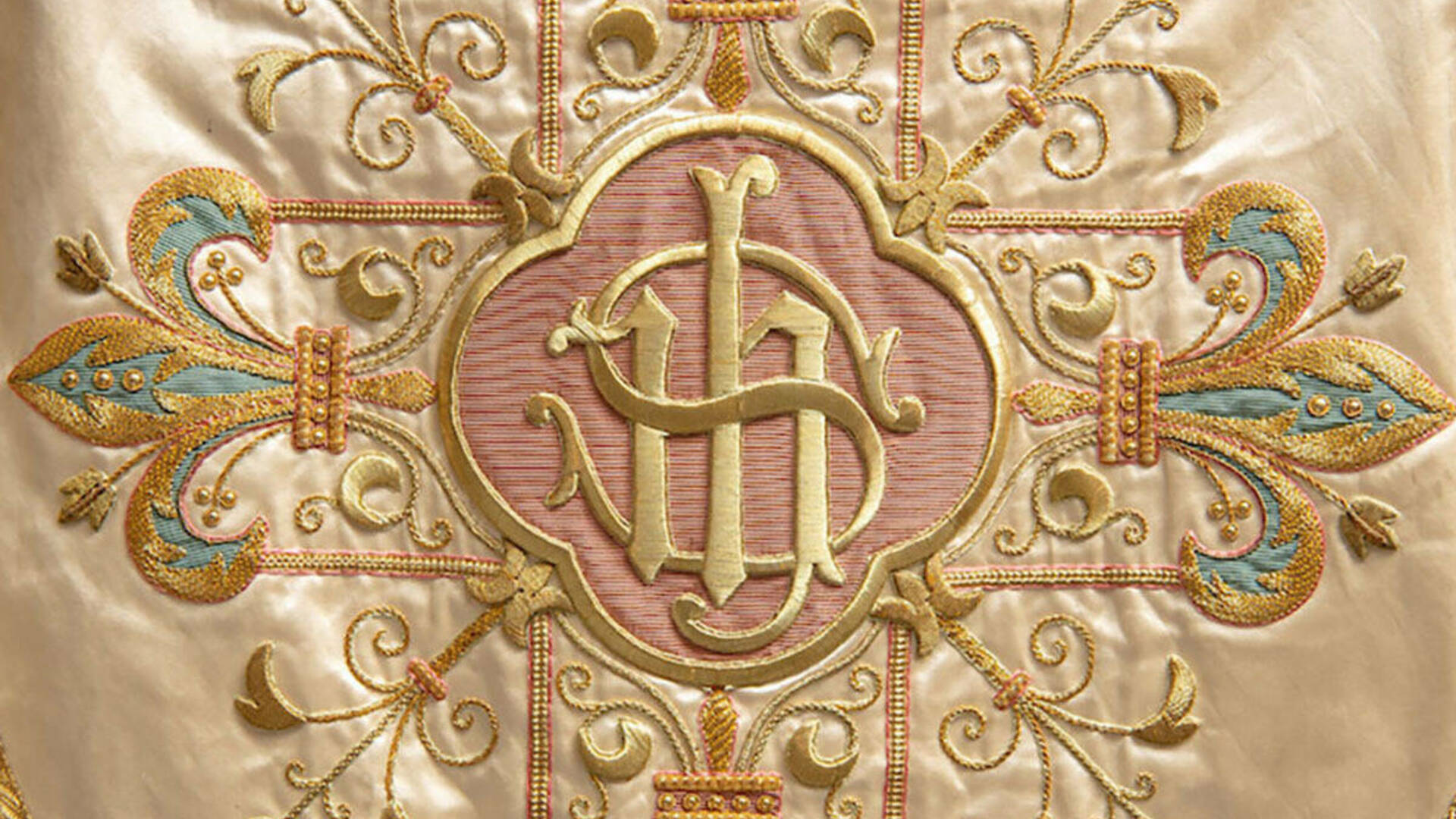The Work of Our Hands
Mar 19, 2019 - Jun 1, 2019 | Snite Museum of Art

FLEUR-DE-LIS COPE (detail). Probably French, late 19th/early 20th century, cream silk, satin weave, gilt metallic yarn appliqué, polychrome silk embroidery, handmade sequins and fringe, and gilt metallic braid. Courtesy of the Congregation of Holy Cross.
Scholz Family Gallery
March 19, 2019 –June 1, 2019
The Work of Our Hands is a multi-venue, focus exhibition organized as part of Notre Dame Forum 2018–19, "Catholic Artistic Heritage: Bringing Forth Treasures New and Old," which explores the ways that the Catholic Church has cultivated art and inspired artists, authors, musicians, and architects of all faiths throughout the centuries.
This year's theme offers the opportunity to highlight examples from Notre Dame's treasury of liturgical vestments, allowing us to appreciate them for the devout creativity, skill and humility of their mostly anonymous artists, and without losing sight of their proper purpose, functionality, and symbolism.
The Snite Museum is proud to be one of three exhibition venues featuring this outpouring of inspired craftsmanship and design. It has on view an embroidered cope and a stole (detail of cope above).
Visitors are encouraged to stop at the other two venues listed below on a self-guided tour to learn more about these works and the generative effect of faith.
Sacristy Museum at the Basilica of the Sacred Heart
Open Monday-Friday from 9:00-11:00 a.m. and 1:00-4:00 p.m.
A chasuble probably made in France that belonged to Saint John Neumann, bishop of Philadelphia (1852-60) and the first canonized American bishop (1977), as well as aTrinity Cope are the featured items on exhibit along with their usual selection of objects from their collection.
Hesburgh Library Rare Books & Special Collections Room at the Hesburgh Library (Main Level)
Open Monday-Friday from 9:00 a.m.-5:00 p.m.
A miter belonging to Archbishop Lamy, the first bishop (1853) and later first archbishop (1875) of the Diocese of Santa Fe, New Mexico, and related texts are on exhibit at the Hesburgh Library.